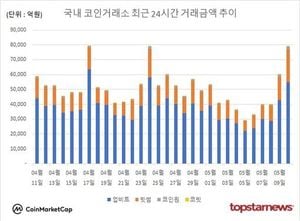The Thailand Art Toy market is witnessing significant growth, particularly through the popularization of blind boxes, which have become beloved among collectors and casual buyers alike. These surprise boxes, known as 'MangHe' or 'blind boxes,' contain various collectible toys but the contents remain unknown until the box is opened. This concept, originating from Japanese culture (specifically related to the tradition of 'Fukubukuro' or 'lucky bags'), has expanded its reach to various markets, including Europe and America.
According to industry reports, today's buyers of blind boxes predominantly belong to the younger generations, with Generation Z leading the charge. Data indicates approximately 32% of consumers aged between 18 and 24 years are the primary demographic engaging with blind box purchases. Following them, 26% of consumers are aged 25 to 29, and 20% are aged 30 to 34. Interestingly, the majority of consumers—around 64%—spend under 5,000 yuan annually on these products, with 31.1% spending less than 1,000 yuan.
One notable factor influencing consumer behavior is the appeal of brands and external packaging, which play pivotal roles before any purchase is made. With the market conditions shifting, there's been a noticeable decrease in price sensitivity among buyers. Instead, businesses are encouraged to focus on character IP (intellectual property) and design aesthetics to attract consumers' interest more effectively. Fun and enjoyment often trump financial motivations when consumers choose to buy these surprise boxes; about 46.8% of those surveyed listed the thrill of anticipation as their primary reason for purchasing, and 39% said it was due to appealing characters.
The current trends reveal how the revenue split among special items has seen high growth rates, particularly among cheaper surprise boxes priced under 50 yuan. The most popular price range for these toys is currently between 51-99 yuan, which continues to grow vigorously. Premium items costing over 500 yuan are also beginning to carve out their market share.
Globally, the art toy market is rapidly developing, with China at the forefront due to its strong growth potential compared to other markets. According to Mob Research Institute projections, the market size is expected to double by 2024, reaching 30 billion yuan, with blind boxes expected to be one of the main growth categories within the industry.
Interestingly, research suggests the demand for blind box toys correlates closely with GDP per capita and cultural development levels across regions. Despite being at the early stages of growth, China's surprise box industry is attracting significant investor interest and competition.
Another area of potential growth lies within the male consumer segment, where currently only 37.4% of art toy buyers are male. Expanding marketing strategies to target male consumers may yield substantial rewards. There is also considerable opportunity to tap uncharted markets, especially among smaller cities where consumer engagement is on the rise, contrasting with slightly diminishing interactions observed among consumers from larger, tier-one cities.
The content inside the blind boxes can dramatically affect sales too. Popular brands often utilize events or character IP as their main selling points; yet, products with less established fan bases also strategically team up with recognized brands to boost visibility and customer interest.
The shift to online shopping is another notable trend, with the popularity of online platforms helping to redefine consumer interactions with the market. This trend is also reflected by the increasing performance of lower-tier price ranges. For example, blind boxes under 50 yuan are noted for demonstrating high sales growth compared to last year's figures.
Turning to the specialty markets, particularly the unique offerings of blind boxes filled with Thai durians, the interest has surged, with the market set to grow by 29.5%, driven by the experience of surprise and excitement of unboxing. Neuroscience research indicates such experiences can significantly spike dopamine levels, contributing to heightened purchasing desires where consumers are willing to pay extra for premium items.
While the excitement for surprise boxes continues to thrive, consumer preferences are beginning to shift, necessitating innovative strategies to maintain engagement. This includes introducing unique products or rare items necessary to keep buyers intrigued. The marketplace’s dynamism presents various challenges related to pricing regulation and product quality assurance.
The promotion of Thailand's unique culture through creative packaging and character design is poised to align closely with regional market trends, appealing to Gen Z consumers eager to connect with their heritage. Collaboration with local artists could also introduce artistic value, enhancing the overall market appeal and consumer engagement.
Despite thriving conditions, the blind box industry must remain agile to adapt to the fast-changing consumer behaviors. Cultivated growth, especially through the approach of combining unique cultural attributes with innovative marketing, might just be what the sustainably-minded Thai art toy market needs to nurture and expand its customer base.



